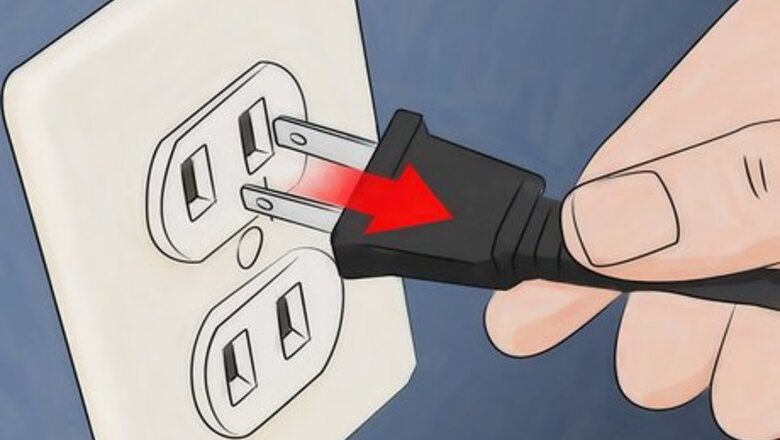
views
General Cleaning
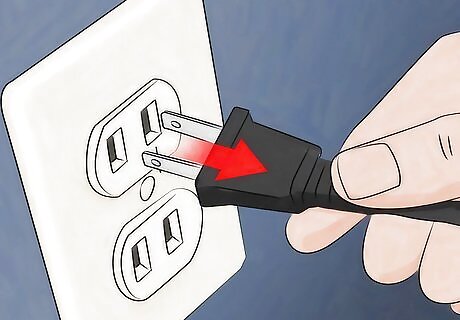
Unplug the dryer. Before you start, you should unplug the dryer to prevent accidents. The plug is usually located behind the machine. Test it to be sure that you have unplugged it correctly. If you have a gas dryer, you will also want to shut off the gas.
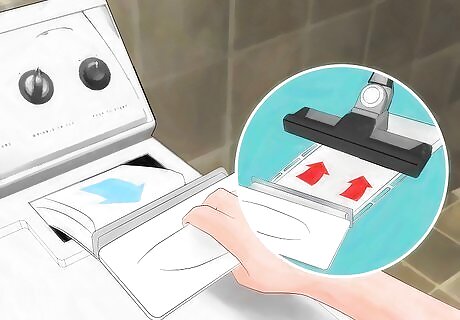
Clean your lint trap with every use and your dryer as a whole once a year. You've probably noticed that lint gets everywhere. There seems to be a cloud of it anytime you open your dryer or fiddle with the trap. Of course, this means that lint works its way into all the cracks and crevices of your machine and you'll want to be sure to clean it at least once a year to prevent problems. A dryer blocked up with lint can dry inefficiently and even cause fires. The lint trap should, of course, be cleaned out after every use. This is very important because if you don't, new lint won't have anywhere to go, creating a mess and increasing the amount of time needed to dry a load of clothes.
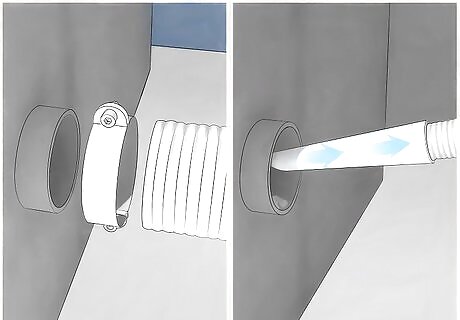
Clean the lint trap with a vacuum. Use a vacuum cleaner to clean out behind the lint trap every few weeks to every few months, depending on how much lint your items create and how well your trap catches the lint. Pull out the lint trap and vacuum the tube that is on the other side. You might also want to vacuum out the exhaust tubes, although these are often difficult to reach or inaccessible.
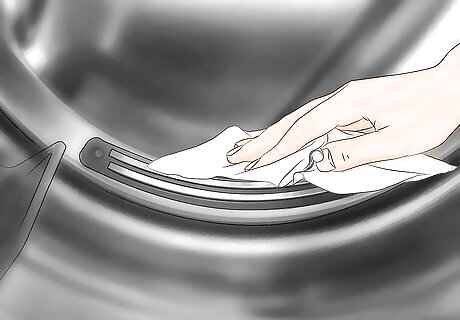
Wipe down the moisture sensor. The moisture sensor, which is on most modern machines, tells your dryer when the clothes are dry. If it's covered in lint it won't work correctly, which can lead to your dryer turning off before everything is dry. Wipe the bar down with rubbing alcohol to clean it and keep your dryer running correctly. These are usually found near the lint trap or at the back of the machine. They will look like two long, silver strips of metal and are usually surrounded by or mounted on plastic. If you don't clean these often, you might need to scrub with something a little more substantial, like a Magic Eraser.
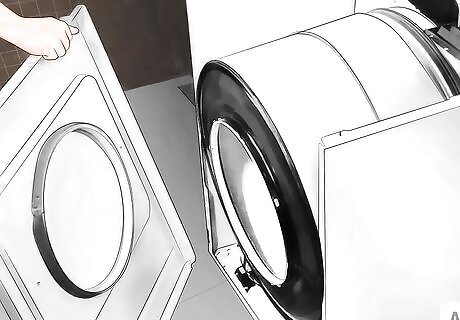
Open the panel surrounding the drum. Much like you can lift the top of your stove to clean below the heating elements, you can open up your dryer if you're brave and clean the lint that builds up around the drum. Different dryers open in different ways, so check the user manual for your model or look it up online. Generally, either the top or front panel will come off (or both). Look for screws around the lint filter, since this is usually the spot to start. With the screws undone, the panel can be removed, though there is sometimes a catch you will have to get around by pulling forward (for a top panel) or using a screwdriver at the gap (for a front panel). With the panel removed and the drum exposed, remove lint and lost items by hand or with a vacuum.
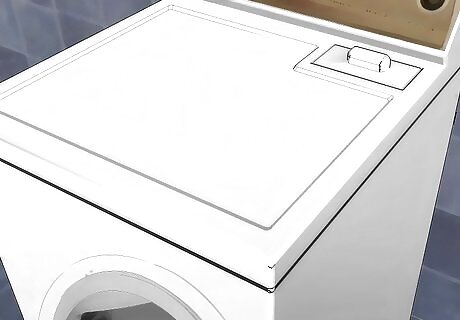
Put it back together. Once you're done, snap the panels back into place and then replace the screws.
Removing Crayon
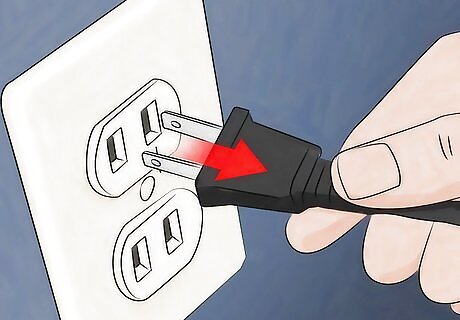
Unplug the dryer. Before you start, you should unplug the dryer to prevent accidents. The plug is usually located behind the machine. Test it to be sure that you have unplugged it correctly.

Scrape off any large remaining crayon. Using a spatula or an old credit card, scrape any large pieces of crayon that may be left off of the dryer drum.
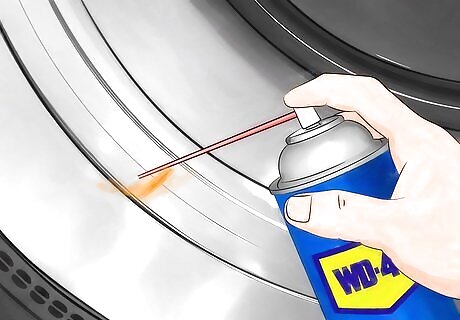
Spray a rag with WD-40. Get an old rag and spray it with WD-40. You should be very sure not to spray the drum itself with the WD-40, just the rag.

Wipe down the affected area. Use the rag to wipe at the spots covered in crayon. Try not to cover any more area with the WD-40 than you have to. This should allow you to remove all of the crayon without too much difficulty. Switch which part of the rag you wipe with frequently to keep from spreading the crayon any more.
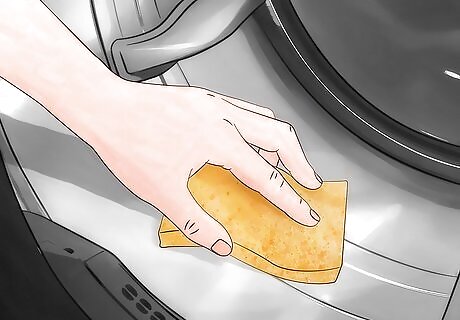
Clean the inside with soap and water. Once you've removed all of the crayon, or at least as much as you can, you'll want to mix up a bucket with soapy water and use a sponge or washcloth to clean the WD-40 out of the drum. Pay extra attention to the spots with the WD-40.
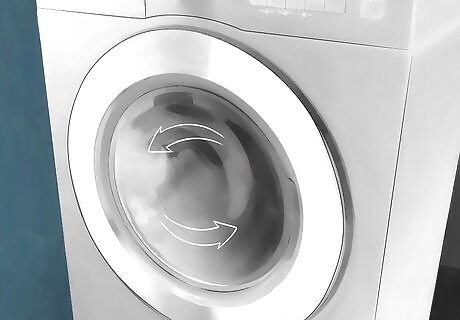
Run a cycle with old towels. With the dryer rinsed out, run a load of old towels through a cycle in the dryer to remove any crayon which might still remain.
Removing Chapstick and Lipstick

Warm the dryer. Start by running the dryer for 10 minutes. This will soften the lipstick and make it easier to remove. You can alternatively use a hairdryer to heat up the specific spot which is being affected. This may be easier and more efficient to do.
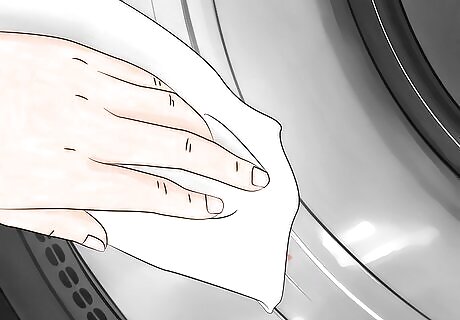
Wipe off as much as you can. With the drum hot, wipe the lipstick with a soft, dry cloth. Switch which part of the cloth you wipe with frequently, to keep from spreading the lipstick any more. You can also try using a makeup wipe to remove the lipstick.
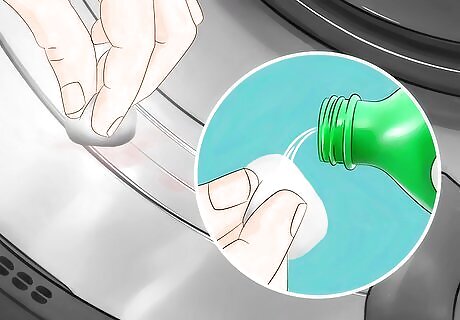
Clean out the remaining product with rubbing alcohol. Unplug the dryer and then soak a cotton ball with rubbing alcohol. Use this to wipe off the remaining lipstick. When you've removed as much of it as you can, rinse with a wet rag or paper towels.
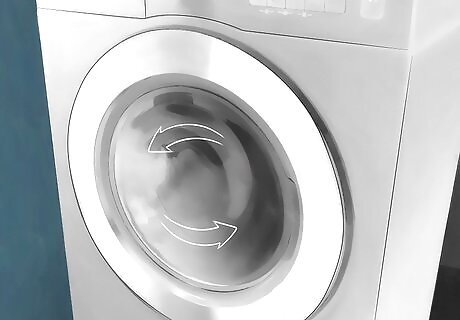
Run a cycle with old towels. With the dryer rinsed out, run a load of old towels through a cycle in the dryer to remove any product which might still remain.
Removing Ink
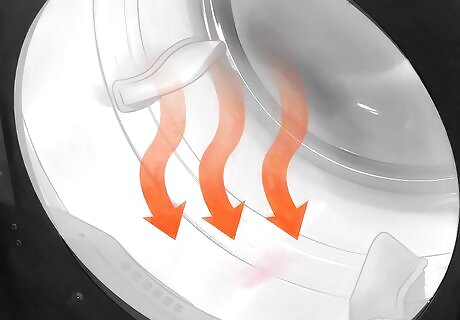
Warm the dryer. Start by running the dryer for 10 minutes. This can help loosen the ink and make it easier to remove. You can alternatively use a hairdryer to heat up the specific spot which is being affected. This may be easier and more efficient to do.

Unplug the dryer. Unplug the dryer to prevent accidents. The plug is usually located behind the machine. Test it to be sure that you have unplugged it correctly. Be sure to go quickly so that the drum is still warm when you're cleaning it.
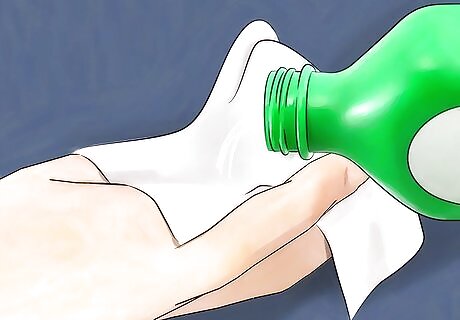
Apply isopropyl alcohol to a rag. Buy some isopropyl alcohol from your local drugstore and apply the alcohol to a white, clean rag. You'll want to be sure that you get plenty of ventilation while you're working with the isopropyl alcohol.
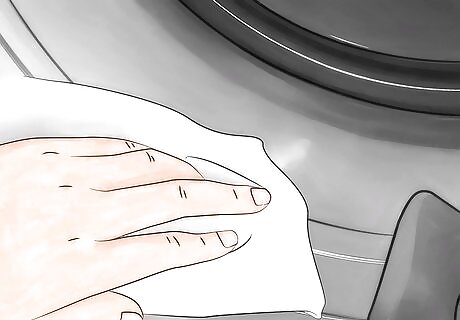
Wipe off the ink. Work quickly to wipe off the ink using the alcohol soaked rag. Change rags frequently to keep from spreading the ink even more.
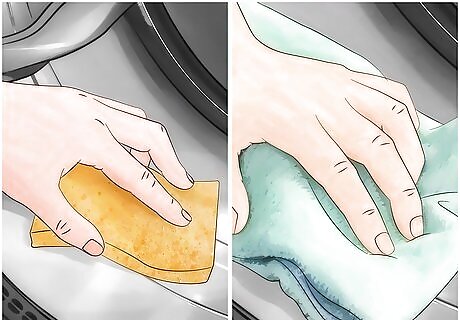
Rinse the drum. Once you've removed as much of the product as you can, mix a bucket with soapy water. Use this water and a clean cloth to wipe down the inside of the drum.
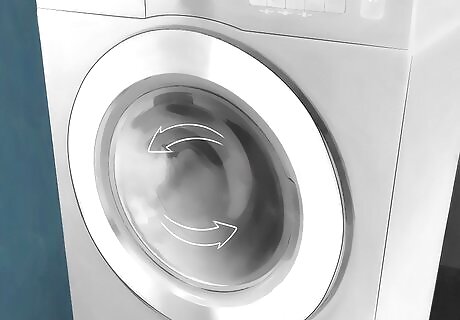
Run a cycle with old towels. With the dryer rinsed out, run a load of old towels through a cycle in the dryer to remove any ink which might still remain.
Removing Dye
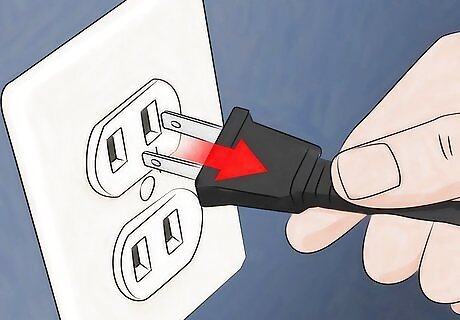
Unplug the dryer. Before you start, you should unplug the dryer to prevent accidents. The plug is usually located behind the machine. Test it to be sure that you have unplugged it correctly.
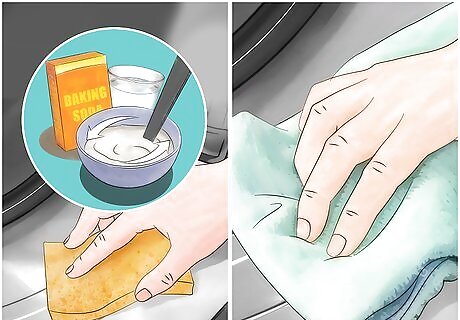
Start by scrubbing with bleach water and a mild abrasive. Make a paste with baking soda and a few drops of water. Then, spray the inside of the drum with bleach water or a bleach cleaning product like Clorox. With a scrubbing sponge, put the paste onto the area you want to scrub and start scrubbing. When you're done, rinse with a wet rag. This should help remove some of the dye. Make bleach water by mixing 1-2 cups of bleach with 1 gallon (3.8 L) of water. You'll want to wear kitchen gloves while you do this, as the bleach and baking soda can be very harsh on your skin.
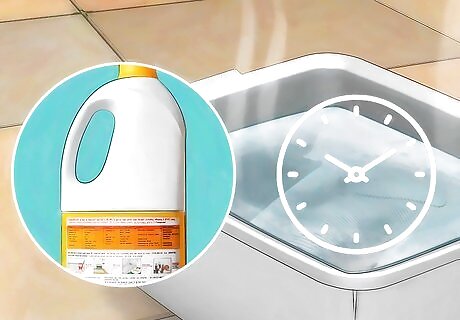
Soak towels in bleach water. Now to remove the rest of the dye. Soak some old towels or a large number of rags in more of the bleach water that you mixed previously. Just get them thoroughly soaked, they should not need to be in the water for more than 5 minutes.
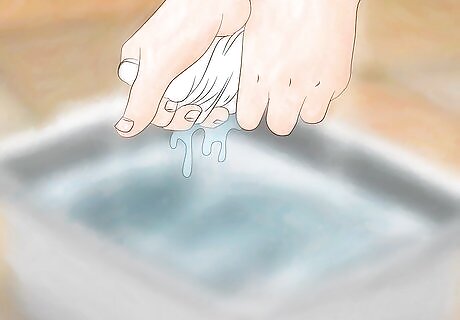
Wring out the towels. Wring the towels out, to remove excess water.
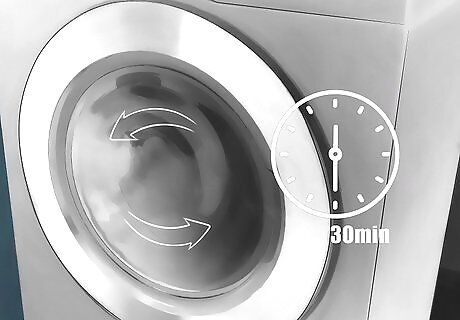
Run the towels through the dryer. Run the towels through the fluff cycle on the dryer for about 30 minutes.
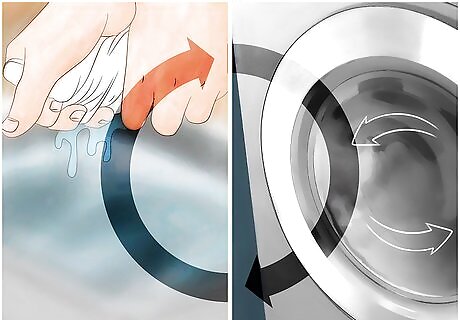
Repeat as needed. This should have removed most if not all of the dye. However, if more remains, you can repeat the towel process a few times to see if any more can be removed.
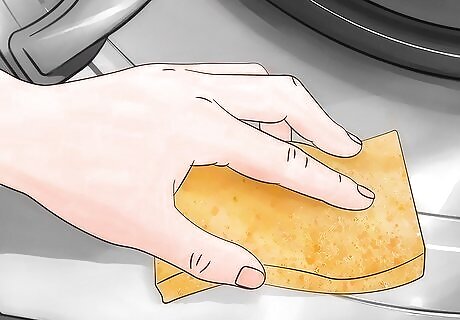
Rinse the drum. Once you've removed as much of the product as you can, mix a bucket with soapy water. Use this water and a clean cloth to wipe down the inside of the drum.

Run a cycle with old towels. With the dryer rinsed out, run a load of old towels through a cycle in the dryer to remove any ink which might still remain.
Removing Gum
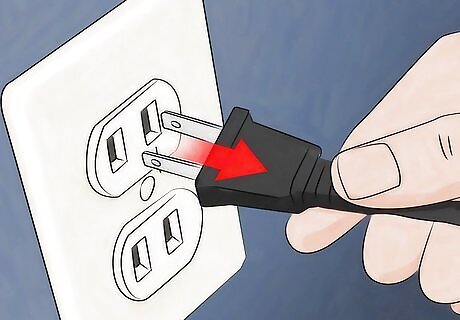
Unplug the dryer. Before you start, you should unplug the dryer to prevent accidents. The plug is usually located behind the machine. Test it to be sure that you have unplugged it correctly.
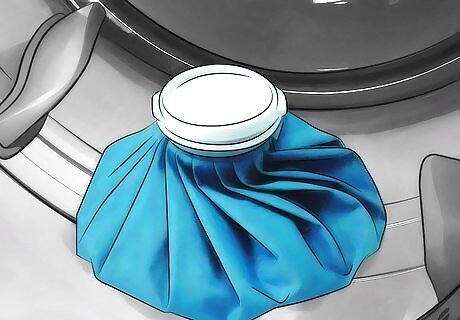
Harden the gum with ice. Use an ice pack to harden the gum. Hold the ice pack directly on the gum. You may need to move the pack slightly to hit different parts of the gum.
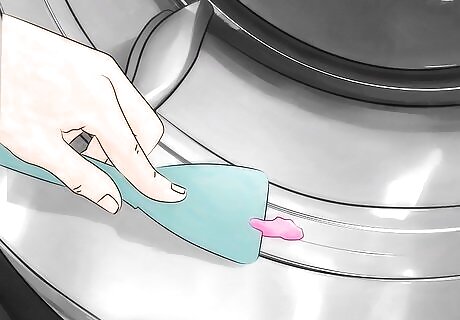
Scrape off the bulk of the gum with a scraper. Using a credit card or plastic windshield wiper, scrape off as much of the gum as you can.
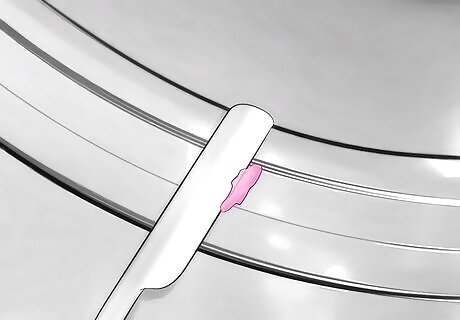
Remove remaining chunks with a razor carefully. If there are any more pieces which are stubborn, you can remove these with a straight razor, like you would use to remove paint from glass. Be extremely careful when you do this. You should not move the razor toward your body and you should try to keep your fingers out of the way. Make small movements and use minimal force. You can try to soften the gum by blowing it with an air dryer and then scrape it off of the drum.
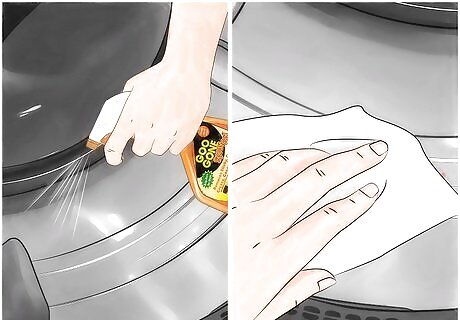
Rub the drum down with a commercial cleaning product. Gum tends to be notoriously difficult to remove. If you still can't get it off, use a commercial product like Goo Gone, which is designed to remove gum.

Rinse with soap and water. With all of the gum removed, you can wipe down the inside of the drum with soap and water to remove any remaining sugar stickiness.
Removing Plastic or Nylon
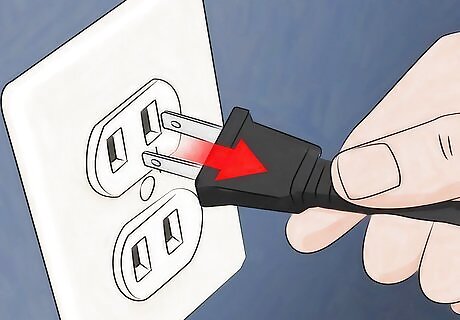
Unplug the dryer. Before you start, you should unplug the dryer to prevent accidents. The plug is usually located behind the machine. Test it to be sure that you have unplugged it correctly.
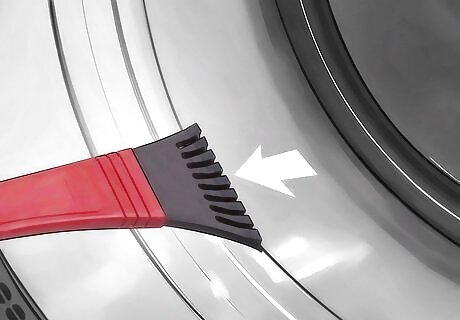
Start by using a plastic windshield scraper. Using a plastic windshield wiper, scrape off as much of the plastic or nylon as you can.
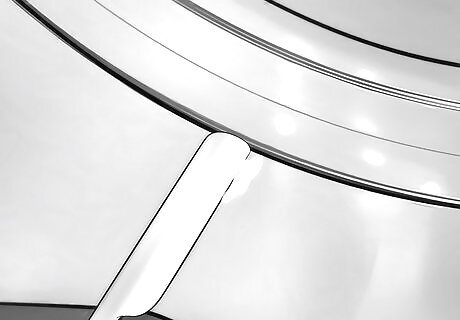
Remove remaining chunks with a razor carefully. Use a straight razor to get underneath the plastic or nylon. Scrape the chunks off of the drum, breaking it into multiple pieces if necessary. Don't move the razor toward your body or fingers.




















Comments
0 comment